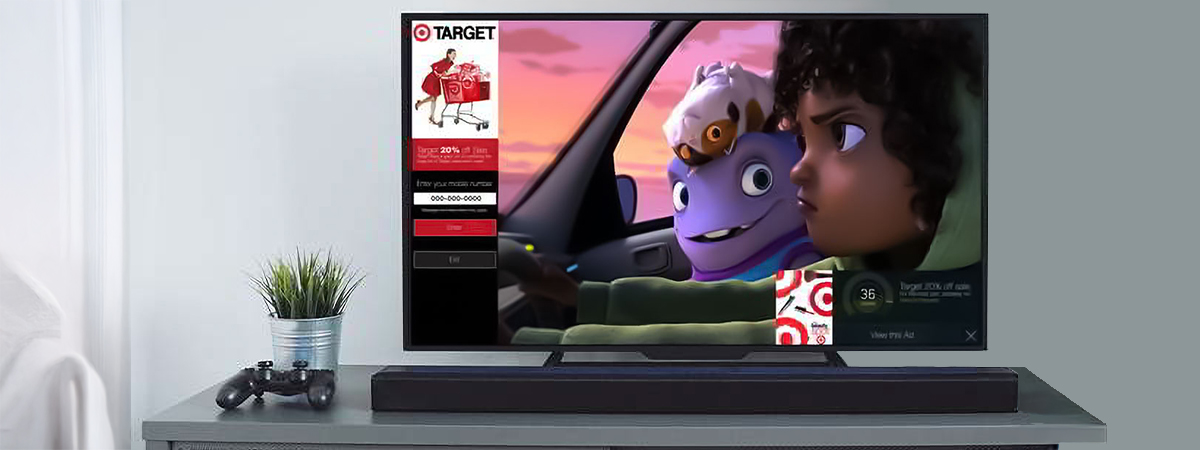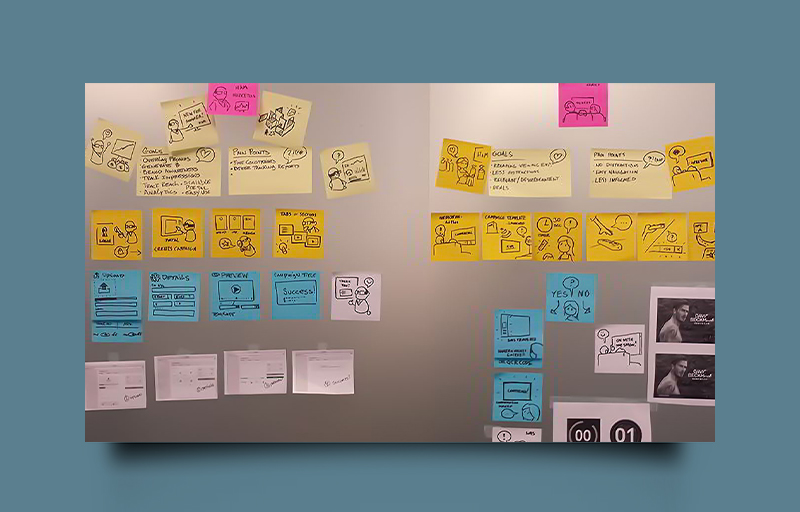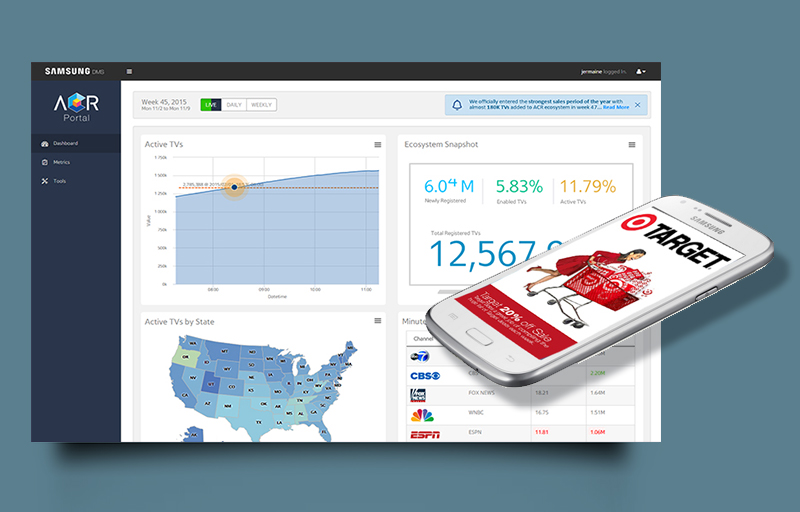
Samsung TV Overlay Campaign Tool
My Role:Overview
TV is the highest ad spending medium in the US. TV provides the largest reach for affluent adults and is regarded as the most effective by luxury brands. However, despite all the advances in the way viewers can consume broadcast TV content, little has changed in the way ads are delivered to consumers through TV broadcast. Typically, TV ads imprint on our memory the value of a brand or the quality of a product so that later these memories influence our searches and buying decisions about products and services we consume. Advertisers have limited resources to effectively measure the return on investment and learn more about the audience for broadcast ads.
The Challenge
Advertisers needed an innovative solution that would revolutionize TV advertising without disrupting the viewing experience. The challenge was to create a TV overlay display system that seamlessly integrated with content while providing advertisers with comprehensive performance tracking capabilities.
Core Issues Identified:
- Need for non-disruptive TV overlay displays that enhance rather than interrupt viewing
- Lack of real-time vendor data dashboard for tracking ad performance metrics
- Missing analytics for most watched channels and active viewing minutes
- Absence of customizable templates that allow vendors to maintain brand consistency


The Process
At Samsung, to address this challenge of limited advertiser ROI on TV ads, we initiated the design process with persona research to understand advertiser needs, followed by the creation of prototypes outlining the user architecture and key interaction flows for campaign creation. This included video uploads and unique tracking ID embedding, which were then used for user validation and informed the interaction design of features like overlay template selection with specified brand elements.
Key Process Elements:
- Developed advertiser personas, including brand-conscious types, using voice of the customer data and market research to guide feature development
- Created low - to high-fidelity prototypes to visualize user flows for campaign creation, asset uploads, and template selection
- Conducted usability tests with advertisers to gather feedback on prototypes, leading to refinements in the interface and workflows
- Designed intuitive interactions for campaign setup and asset management, with user-friendly controls for customizing templates across devices
The Outcome
The first-generation application created was a simple-to-navigate tool that provided the ability to capture video and budgetary data required to run user-friendly overlay campaigns. These interactions are user-initiated and non-disruptive, enhancing rather than interrupting the viewing experience.
Key Results:
- Non-disruptive TV overlay display system that maintains viewing experience integrity
- Real-time vendor data dashboard tracking ad performance metrics
- Analytics for most watched channels and active viewing minutes
- Customizable template system allowing vendors to maintain brand consistency
- Streamlined campaign creation process with intuitive asset management
Design Insights:
The collaborative approach during storyboard sessions proved essential for aligning the team around complex user flows and interaction patterns. This early alignment significantly reduced miscommunication and rework during development phases. Additionally, the iterative progression from low-to-high fidelity prototypes allowed us to validate core concepts and refine workflows before committing to development, ultimately reducing the overall project timeline and ensuring a more polished final product.
We did not have fully developed personas early in the process, and this became a critical foundation for all subsequent design decisions. These personas could have better grounded the team on voice-of-customer data and market research, keeping the team focused on real user needs rather than assumptions. The emphasis on real-time metrics proved invaluable for clients to monitor overlay activities, as it directly addressed advertisers' core pain point of measuring TV ad effectiveness. Implementing a robust template system not only ensured brand consistency for our clients but also streamlined asset allocation processes, making campaign creation more efficient and reducing the cognitive load on users managing multiple brand elements across different overlay formats.